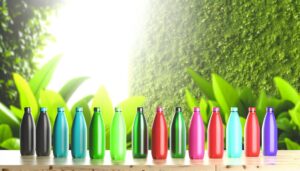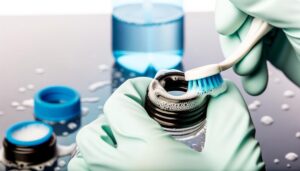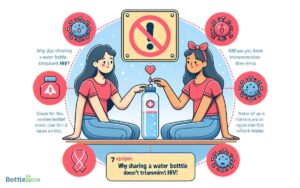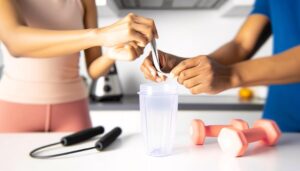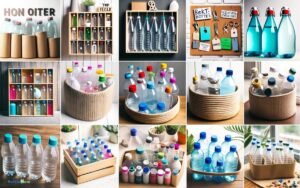Can You Take a Frozen Water Bottle Through Tsa? A Guide!
You can take a frozen water bottle through TSA checkpoints if it’s completely solid when you go through security.
Make sure to hold it upright and inform the TSA officer about your frozen bottle. If any part of it has melted, it must adhere to the 3.4-ounce liquid rule.
Packing it in an insulated bag can slow down melting, reducing issues while you pass through security. Understanding these guidelines helps guarantee a smoother process at the checkpoint.
Additional details and alternative hydration options can provide further insights into seamless travel experiences.
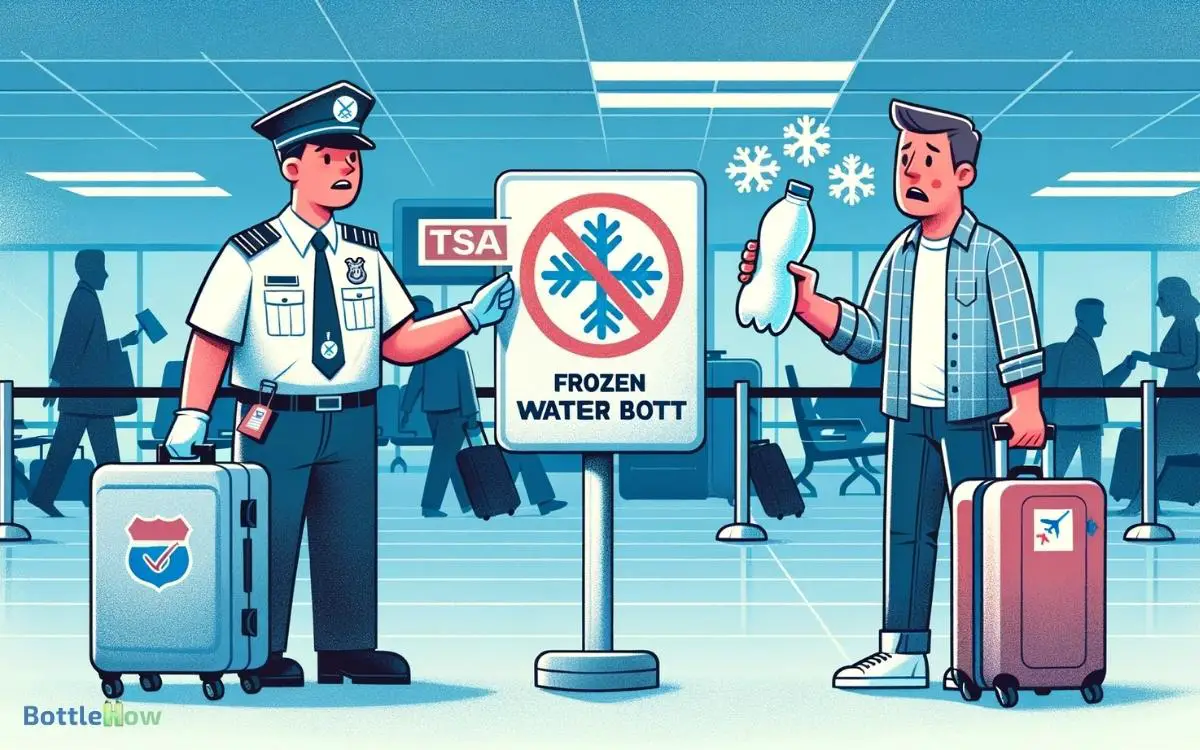
Key Takeaways
TSA Liquid Rules Overview
Understanding the TSA’s liquid rules is crucial for guaranteeing a smooth and hassle-free experience at airport security checkpoints. These rules are designed to maintain safety and efficiency.
You need to know that any liquid, gel, or aerosol you bring must be in a container of 3.4 ounces (100 milliliters) or less.
Larger containers, even if partially full, aren’t allowed. All items must fit into a single, quart-sized, clear plastic zip-top bag.
Medical and infant necessities have exceptions but must be declared. By adhering to these guidelines, you’ll avoid delays and potential confiscation of your items.
Understanding the 3-1-1 Rule
When you’re preparing to go through TSA, understanding the 3-1-1 rule is essential. This rule dictates how you can carry liquids, gels, and aerosols in your carry-on, requiring them to fit in a single quart-sized bag.
Additionally, you should be aware of exceptions and special cases that might apply to items like medications or baby formula.
Liquids, Gels, and Aerosols
The 3-1-1 rule is crucial to understand when you’re packing liquids, gels, and aerosols in your carry-on luggage.
Under this rule, each passenger is allowed to bring containers of liquids, gels, and aerosols that are 3.4 ounces (100 milliliters) or less per item.
These containers must fit into a single, clear, quart-sized plastic bag. You’re permitted one bag per traveler, which needs to be placed in a bin for screening at the security checkpoint.
This rule applies to all types of liquids, gels, and aerosols, including toiletries, beverages, and other consumables.
Adhering to the 3-1-1 rule ensures a smoother security process and helps maintain safety regulations during air travel.
Quart-Sized Bag Limitations
You’ll need to be mindful of the quart-sized bag limitations when packing your carry-on to guarantee compliance with TSA’s 3-1-1 rule.
This rule dictates that all liquids, gels, and aerosols must be in containers of 3.4 ounces (100 milliliters) or less and fit within a single, clear, quart-sized, resealable bag.
Each passenger is allowed only one such bag. Items such as toothpaste, shampoo, and lotion must adhere to these restrictions.
To avoid delays at security checkpoints, make sure that your quart-sized bag is easily accessible in your carry-on.
Exceptions and Special Cases
While adhering to the quart-sized bag limitations is crucial, it’s also important to understand the exceptions and special cases within the TSA’s 3-1-1 rule.
For instance, medically necessary liquids, such as medications or baby formula, are exceptions and can exceed 3.4 ounces but must be declared to TSA officers at the checkpoint.
Frozen liquids, like a frozen water bottle, can be carried through security if they’re completely solid when presented for screening. If partially melted, they must comply with the 3-1-1 rule.
Additionally, breast milk, juice for infants, and items needed for medical purposes are also exceptions. Being aware of these nuances ensures smoother security checks and adherence to TSA regulations.
Frozen Vs. Liquid State
When maneuvering TSA regulations, understanding the distinction between a frozen and liquid state is crucial for ensuring your water bottle passes security checkpoints.
TSA guidelines explicitly state that liquids over 3. 4 ounces can’t be carried through unless frozen solid. If your water bottle is entirely frozen, it’s generally permitted. However, if it’s partially melted, it’ll be treated as a liquid and subject to restrictions. To avoid any issues, ensure your frozen bottle has no liquid sloshing around when passing through security. TSA agents have discretion in enforcement, so it’s best to check before traveling. If you’re wondering, can you put ice in a Brita filter bottle to keep it cold, the answer is yes, but melted ice may still be subject to liquid restrictions at security.
Ensure that your frozen water bottle remains solid as you approach the checkpoint. Any signs of melting could result in confiscation. Keep in mind that the bottle’s transparency allows officers to verify its content quickly.
Exceptions to the Rule
In certain situations, TSA allows exceptions to the frozen water bottle rule, offering more flexibility under specific conditions.
For instance, if your frozen water bottle is solidly frozen when you pass through security, it’s generally permitted.
However, as it starts to melt, it must follow the 3-1-1 liquids rule, meaning any liquid must be in containers of 3.4 ounces or less and placed in a single quart-sized bag.
If the bottle is only partially frozen or contains any liquid, it’s subject to standard liquid restrictions. Always double-check TSA guidelines before traveling, as regulations can change.
Understanding these exceptions ensures you’re well-prepared and avoid potential delays during your security screening process.
Medical and Baby Needs
When it comes to medical and baby needs, the TSA provides specific exceptions for items like medications, baby formula, and milk.
You can carry these liquids in quantities greater than 3.4 ounces, but you must declare them at the checkpoint for inspection.
Make sure you separate these items from your other belongings to facilitate a smooth screening process.
TSA Exceptions for Medications
To guarantee compliance and avoid unnecessary delays, passengers should carry medically necessary liquids, gels, and aerosols in larger quantities than the standard 3.4 ounces, provided they declare these items at the security checkpoint.
When you travel with prescription medications, you should keep them in their original packaging with a clear label to facilitate screening. Inform the TSA officer about these items before the screening process begins.
Ice packs, gel packs, and other accessories used to cool medication are also permitted but must be completely frozen when you present them at the checkpoint. It’s crucial to separate these items from your other belongings to expedite the screening.
Always check the TSA’s latest guidelines to guarantee compliance and avoid unnecessary delays.
Baby Formula and Milk
Parents traveling with infants can bring baby formula, breast milk, and juice in reasonable quantities through the security checkpoint.
The TSA allows these items in excess of the 3.4-ounce liquid rule to guarantee your child’s needs are met. You’ll need to declare these items at the security checkpoint for inspection.
Here are key points to remember:
- Reasonable quantities: Bring only what’s necessary for the flight.
- Separate screening: These items will undergo additional screening.
- Ice packs: Gel or liquid ice packs are allowed to keep items cool.
- Labeling: Clearly label containers to avoid confusion.
- Documentation: No medical prescription is required, but it helps to have a note from a healthcare provider.
Ensure smooth travel by following these guidelines.
Tips for Keeping Water Frozen
To guarantee your water bottle stays frozen through the TSA checkpoint, start by filling it completely to maximize the ice retention.
- Use a high-quality, insulated bottle designed to keep liquids cold for extended periods.
- Before freezing, confirm the bottle’s lid is securely closed to prevent leakage.
- Position the bottle upright in your freezer, allowing for even freezing and minimizing air pockets.
- For added longevity, freeze the bottle in stages, adding water gradually to create layers of ice.
When traveling, store the frozen bottle in an insulated bag or wrap it in a towel to maintain its temperature.
Security Checkpoint Protocol
When you approach the security checkpoint, make sure your frozen water bottle is clearly visible and ready for inspection.
Keep it in your carry-on but easily accessible. The TSA officers will need to verify that the bottle is indeed frozen solid.
To guarantee a smooth process:
- Place it in a clear plastic bag: This allows easy visibility and quick access.
- Keep it separate from other liquids: Avoid confusion with other items.
- Hold it upright: Helps demonstrate that it’s still frozen.
- Inform the officer: Proactively mention you have a frozen water bottle.
- Be prepared for additional screening: If necessary, comply with further inspection.
Following these steps will facilitate a quicker, hassle-free experience at the checkpoint.
Handling Melting Ice
If your frozen water bottle starts to melt during the journey, you need to be mindful of TSA regulations regarding liquids.
Once the ice begins to turn into liquid, it falls under the 3-1-1 liquids rule. This means any liquid exceeding 3.4 ounces must be placed in a checked bag or discarded before the security checkpoint.
Make sure the bottle remains fully frozen as you pass through security. If it’s partially melted, TSA officers may confiscate it. To prevent this, pack the bottle in an insulated bag to slow down the melting process.
Always check the latest TSA guidelines before you travel to avoid any surprises and ensure a smooth security experience.
Alternative Hydration Options
Consider switching to reusable water bottles, which you can fill once you pass security.
Hydration packs offer convenience and hands-free access to water, making them ideal for travelers.
Additionally, take advantage of the onboard beverage service to stay hydrated throughout your flight.
Reusable Water Bottles
Travelers looking for alternative hydration options should consider bringing reusable water bottles, which can be easily refilled after passing through security checkpoints.
These bottles aren’t only eco-friendly but also guarantee you have access to water throughout your journey without relying on costly airport purchases.
Here’s why you should opt for a reusable water bottle:
- Cost-effective: Save money by refilling at water fountains.
- Eco-friendly: Reduce single-use plastic waste.
- Convenient: Many airports have bottle-filling stations.
- Durable: High-quality materials guarantee longevity.
- Healthier: Often made from BPA-free materials.
Carrying a reusable water bottle is a smart, sustainable choice that keeps you hydrated and minimizes environmental impact. Remember to empty it before security to comply with TSA regulations.
Hydration Packs Benefits
Hydration packs offer a hands-free, efficient way to stay hydrated on the go, making them an ideal alternative for frequent travelers.
These packs typically feature a bladder or reservoir, which can hold a significant amount of water, reducing the need for constant refills.
The built-in hose and mouthpiece allow you to sip water without interrupting your activities. They’re designed for comfort and include adjustable straps to guarantee a secure fit.
Additionally, hydration packs often come with extra storage compartments, letting you carry essential items like snacks, electronics, or travel documents.
When moving through airports, their compact design and ease of use make hydration packs a practical choice, ensuring you stay hydrated without complications.
Onboard Beverage Choices
When flying, you’ll find a variety of onboard beverage choices that can help maintain your hydration levels. Airlines typically offer several options, ensuring you stay refreshed during your flight.
Here are some of the most common choices:
- Water: Always available and essential for staying hydrated.
- Juice: Offers a flavorful alternative with added vitamins.
- Tea: Provides a soothing, warm option, often available in various types.
- Coffee: A popular choice for a caffeine boost, but remember it can be dehydrating.
- Soft Drinks: Available for those who prefer a fizzy refreshment.
Personal Experiences
Moving through security with a frozen water bottle in hand, many have found themselves caught off guard by the nuances of TSA regulations. You’re not alone if you’ve experienced confusion; others have shared their stories.
Some travelers successfully passed through with completely frozen bottles, while others faced issues when the water was partially thawed. It’s important to make sure your bottle is entirely frozen solid before reaching the checkpoint.
To avoid hassles, consider freezing your bottle the night before your flight. If the bottle starts to melt during your journey to the airport, you might encounter problems.
International Travel Considerations
While maneuvering TSA regulations with a frozen water bottle can be tricky, international travel introduces additional complexities to take into account.
Different countries have unique security protocols, and understanding these nuances is important.
Here are some essential considerations:
- Country-Specific Rules: Research the security guidelines of your destination country.
- Customs Declarations: Frozen liquids might need to be declared.
- Connecting Flights: Check if layover countries have different regulations.
- Language Barriers: Make sure you understand and can communicate security requirements.
- Local Airline Policies: Airlines might have stricter rules than the TSA.
Being meticulous in your research and preparation will help you navigate international travel smoothly. Always verify current regulations to avoid unexpected issues.
Final Thoughts on TSA Rules
Adhering to TSA rules requires a thorough understanding of their guidelines to guarantee a hassle-free travel experience.
Knowing the specifics, like the allowance of frozen water bottles through security, can save you time and stress. Make sure your frozen items are solid at the time of screening.
If they’re partially melted or contain liquid, they must comply with the 3-1-1 liquids rule. Familiarize yourself with TSA’s official website for any updates or changes in regulations. Always pack with intention, keeping prohibited items out of your carry-on.
Conclusion
When it comes to TSA’s liquid rules, keep in mind: a frozen water bottle is your ally, not your enemy.
While it must be fully frozen, this small hack can keep you hydrated without hassle. By understanding exceptions and alternatives, you’re well-prepared for smoother travel.
So, pack smart, stay informed, and glide through security like a pro. Remember, knowledge is power—don’t let liquid rules freeze your travel plans. Safe travels and stay hydrated!

